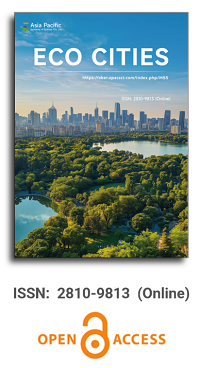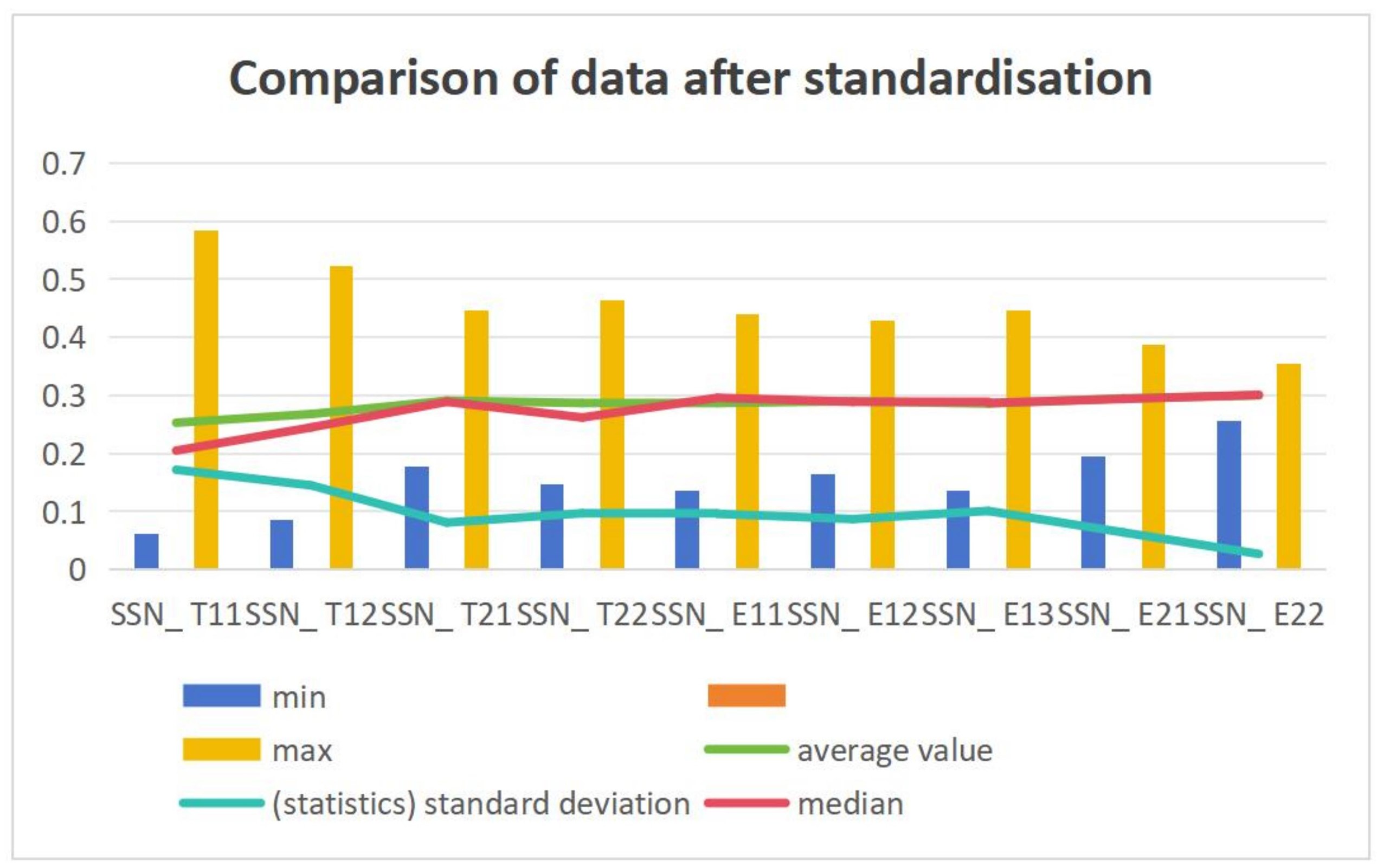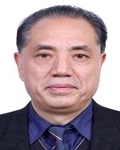


Welcome to Volume 2, Issue 2 of Eco Cities. Continuing with the topic from the previous issue, this issue presents a compelling discussion of urban sustainable development from various viewpoints, including factors impacting urban sustainable development, such as urban green space, and strategies to promote urban sustainable development, such as the application of urban meteorology.
Issue release: 30 December 2021
Green areas are the starting point of a city because they represent the greatest purification of any pollutants in the surrounding environment, which is caused by the discovery of different reasons for population growth, the lack of environmental programs, and human indifference to environmental problems. This affects the overall formation of man because he needs environmental balance, that is, human nature. Therefore, this behavior leads to the reduction and generation of environmental degradation. The main objective of this work is to develop an environmental strategy to improve the green area. Department C, “Terrace Community Council on 28 July”, is located in Tawaka City, Barinas City, Barinas State. The method used is quantitative, and the type of research is a feasible project with an on-site design. The tool used for data collection is the questionnaire to obtain the results. The study population was 192, and the sample was represented by 57 subjects. On the other hand, reliability was proved after the instrument tabulation, and the result was 0.92. In this sense, this conclusion is handled according to the objectives proposed in the study because the application of environmental technology helps to improve green space in the short term, as is the case with Tawaka urban development. If the green space is a space, it has been phased out because the residents of the department have not taken any strategy to maintain it, where they provide residents and tourists with the aesthetics of the area and the relaxing benefits provided by the green space.
Issue release: 30 December 2021
The purpose of the study is to determine the impact of urban indicators on the sustainable development of the Atoll metropolis in the Junín region, Peru, including the impact of its specific urban composition and territorial allocation, natural resource management, social cohesion, and economic development on urban sustainable development. Three methods were used: the first was the evolution map indicator and census information system the second was the method record of testing the integrated urban indicator system of urban planning from 1961 to 2011, and the third was the method of estimating the sustainable development level of the territory, according to the 2008 biography prepared by the Inter American Institute of Agricultural Cooperation. The following results were achieved: The bulk density of 115.87 inhab/ha in 1961 decreased steadily in 2011, reaching 93.67 inhab/ha. The comparative urban planning from 1961 to 2011 decreased from 14 indicators obtained to only one indicator applicable. It was noted that 13 indicators were not applicable due to method defects, and monitoring was not allowed due to a lack of reliability. Finally, the biography showed the trend toward urban stability. The results show that the urban indicators are practical, which shows the degree of impact on the current and predictable situation of urban human settlements. Although this situation has achieved vegetation growth in an inert and spontaneous way, it has led to an improvement in sustainability in the medium term.
Issue release: 30 December 2021
Urban green spaces play a crucial role in urban sustainability because they provide a variety of environmental and social benefits, which is why every city claiming to be modern, safe, inclusive, and sustainable must ensure that its residents have access to and use these spaces. Mexico City has been upgraded to a city in transition to sustainable development, which is why it has launched various plans and actions focusing on environmental protection. Therefore, the main purpose of this study is to compare the AVU area of the two urban centers of the city from 1990 to 2015 using the census of the Geographic Information System (GIS) and the National Institute of Statistics and Geography. Information is used to understand the social situation of each mayor’s office during the study period. The results show that although the social gap has narrowed in this period, there are great differences in area and quality between the two cities.
Issue release: 30 December 2021
Temperature is one of the meteorological variables that can best represent the climate of urban areas. It shows obvious sensitivity to urban growth and expansion, resulting in the so-called urban heat island. “Urban climatology has made remarkable progress in dealing with problems in the process of urbanization”[1]. It serves elements such as learning contents and initiatives for environmental order or climate comfort suggestions. In recent years, the development trend of ecological cities has been greater, which aims to follow the ecological principle. As a new way of sustainable development, there is more vegetation to balance the heat regulation of the city. Using different statistical data from meteorological stations, data recorder button measurement data, and temperature and humidity sensor data with an environmental probe, a hot city comparison between the capital and adjacent rural and semi-rural areas is carried out. These data have produced the results of encouraging sustainable development initiatives. This has led to better population habitat conditions for the next generation over the years.
Issue release: 30 December 2021
This paper aims to study behavior in the urban environment. In the city, because any intervention will have a global impact on it, it reflects the rights of the city, such as the right of citizens to participate in determining their future, in order to achieve a fairer order of things. On the other hand, the issue of incorporating the concept of sustainable development into our law is being studied, which means promoting action in the urban environment, focusing on the restoration, regeneration, and reform of existing cities rather than the construction of new cities. In this regard, mainstreaming sustainable development means a Copernican transformation of land policy, which is no longer a resource but the first natural resource as always. As mentioned earlier, actions in the urban environment include restoration and renewal. Therefore, the focus of the work is to study the so-called actions in the urban environment. Through these actions, we can innovate urban planning and occupy free or public spaces to improve accessibility. House, wait. There is little originality in the legal system, while the provisions on the participation and implementation of actions strongly review the compensation system of urban legislation and finally study urban recovery operations and relocation and return operations.
Issue release: 30 December 2021
According to the requirements of China’s new urbanization development strategy, this paper puts forward the important role of urban design in urban development and construction. This paper discusses the disputes on the evaluation standards of urban design, summarizes the typical modes of urban design in the field of local practice and exploration, expounds the problems and countermeasures in the legal environment and market environment of urban design, and finally puts forward the main research contents and technical system of ecological urban design, and points out that ecological urban design will become the direction of sustainable development of cities in the future.

Chinese Academy of Sciences, China
Indexing & Archiving
Asia Pacific Academy of Science Pte. Ltd. (APACSCI) specializes in international journal publishing. APACSCI adopts the open access publishing model and provides an important communication bridge for academic groups whose interest fields include engineering, technology, medicine, computer, mathematics, agriculture and forestry, and environment.


 Open Access
Open Access

.jpg)

.jpg)



